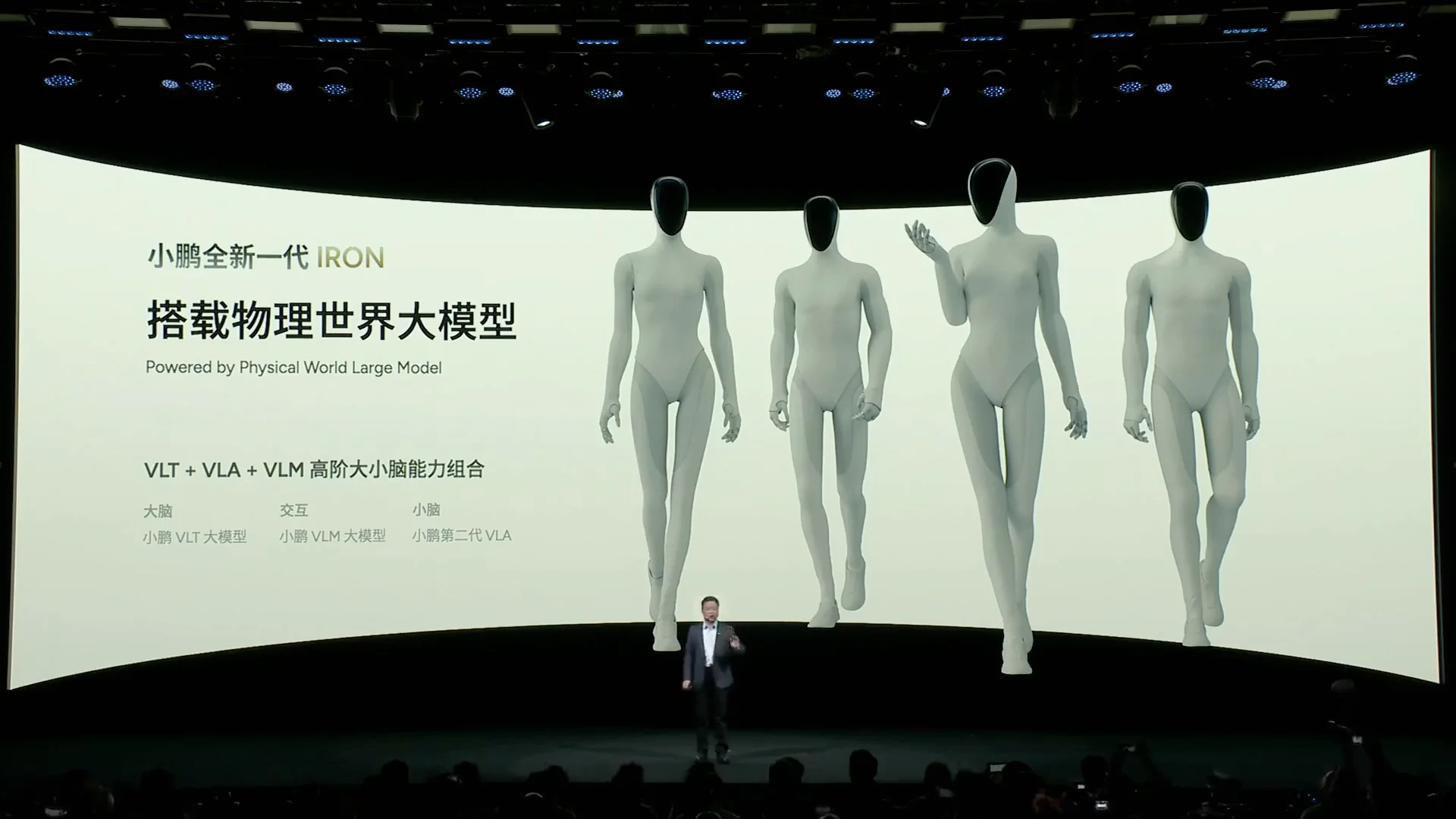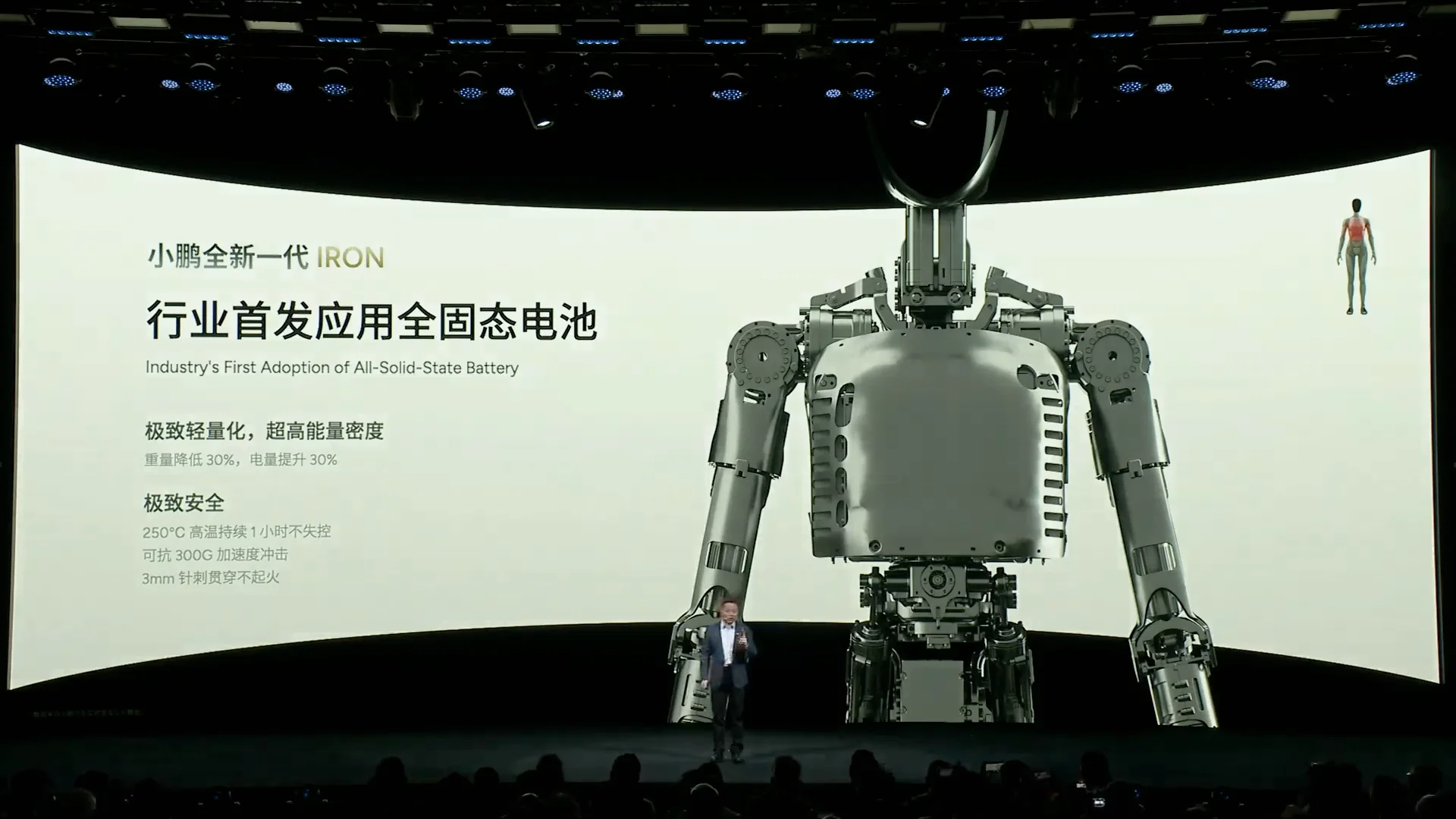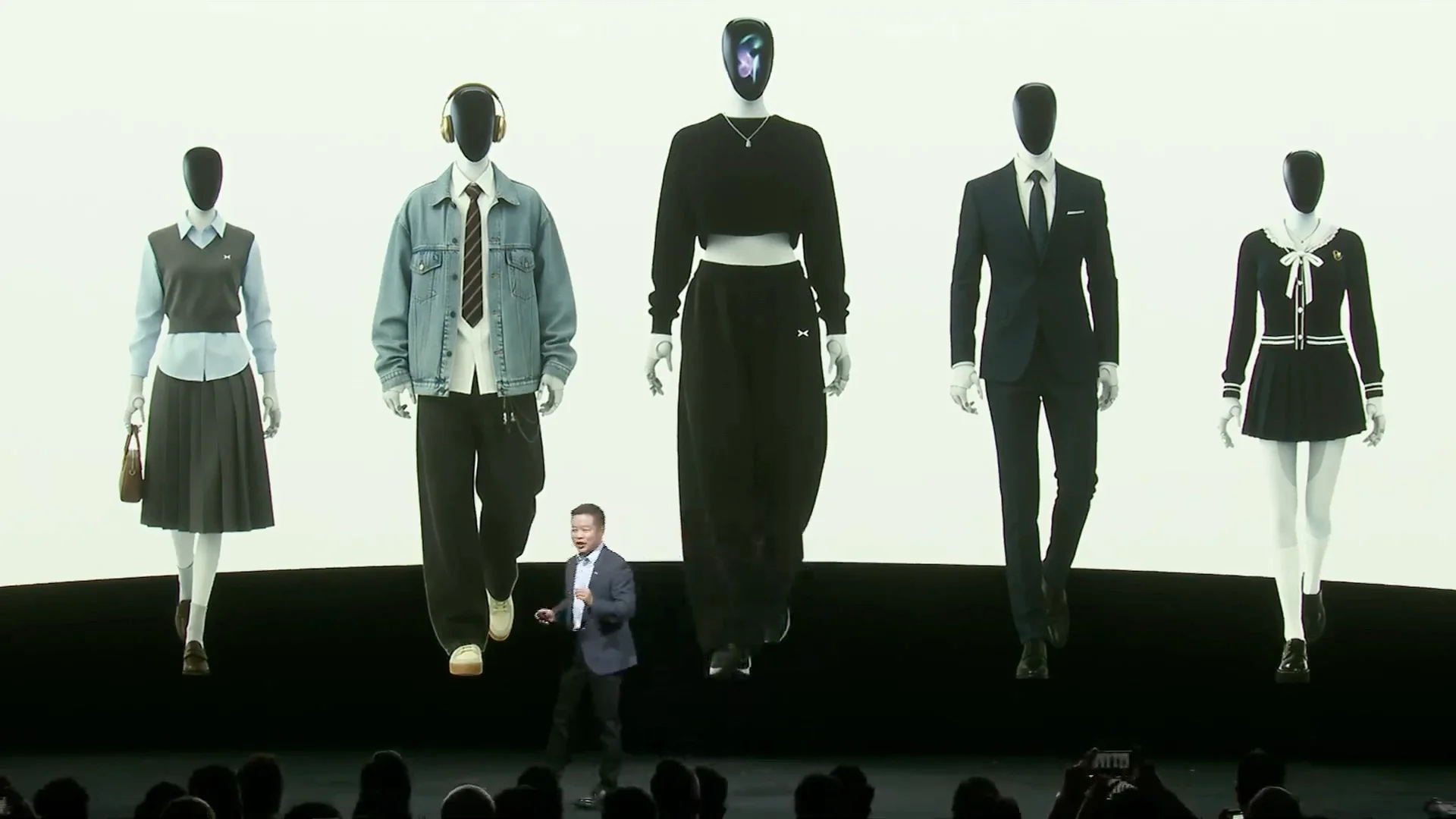- Published on
Xpeng Debuts 'Most Human-Like' Iron Robot, Details VLT Brain and 2026 Production Goal

Xpeng's AI Day 2025 event, themed "Emergence," delivered its most anticipated reveal: the next-generation 'Iron' humanoid robot. In a demonstration designed to showcase its progress, a robot with a distinctly human-like, female form walked across the stage with a gentle, fluid gait.
The demonstration was effective—CEO He Xiaopeng noted that during rehearsal, some colleagues asked, "is there a real human inside the iron?".

This new "most human-like" robot represents a significant strategic pivot for the company. He explained that of Xpeng's seven generations of robots, five were quadrupeds. The company ultimately pivoted away from four-legged designs, citing their lack of hands and difficulty navigating complex home environments.
According to He, a human-like form is crucial for collecting "valuable data from humans". He argued that if a robot's structure is "totally different from humans, then we cannot collect realistic data" , making it harder to generalize for human-centric scenarios like homes, offices, and shopping malls.
The AI 'Brain' Emerges
The "Emergence" theme of the AI Day appears to be a direct reference to the robot's new AI system. As previously reported by Humanoids Daily, Xpeng has been developing a complex, multi-modal AI architecture to move its robots from remote operation to true autonomy.
He confirmed this architecture, which combines three large models: VLT, VLA, and VLM.
- VLT (Vision-Language-Task): Announced for the first time, this model is described as the "core engine" and "brain" for the robot's autonomous actions and decision-making in the real world.
- VLA (Vision-Language-Action): This model is adapted from Xpeng's autonomous driving division. He noted the challenge is far greater in robotics, which must control 82 joints, unlike a car's simpler directional movement.
- VLM (Vision-Language-Model): This model also originates from Xpeng's automotive work.
This entire system runs on three of Xpeng's self-developed Turing AI chips, which the company claims provide a maximum computing power of 2,250 TOPS.
New Hardware: Solid-State Batteries and Bionic Hands
Beyond the AI, the keynote detailed a new "bionic" hardware platform.
A standout claim was the inclusion of what Xpeng says is the "first all-solid-state battery in the industry". He defended using this sought-after technology in a robot instead of a car, arguing that the stringent safety requirements for a device operating in a home or office make it the ideal testbed.

The presentation also focused on the notoriously difficult challenge of hands. The new Iron robot features "dexterous hands" with 22 degrees of flexibility per hand. Other hardware features include:
- Human-like Spine: Allows the robot to bend over "like human beings".
- Customization: The platform is designed for customization, with options for different body shapes , sexes , and a "full coverage soft skin" with touch sensors.
- 'Face': A head-mounted 3D curved display acts as a face, capable of showing emotions.
A 'Warmer' Robot: Customization and Gendered Forms
In a strategic move that diverges sharply from the neutral, sexless designs favored by many competitors, Xpeng detailed plans to make the Iron robot highly customizable. He Xiaopeng explained this is part of a vision to make the robot "warmer and also more intimate" as it eventually moves into households.
The new platform includes "bionic muscles" that allow for "different body shapes". He noted that customers could choose "a little bit fatter iron or... a slimmer iron" and "customize... based on your preferences". The robot will also feature a "full coverage soft skin" embedded with "touch sensors" for interaction.

Most notably, this customization extends to "different body shapes and sexes". He drew a direct parallel to the automotive industry: "just like you buy the car... in the future. When you buy the robot, you can choose the sex". This vision extends to clothing, allowing the robot to appear as "people from different industries".
A Cautious Path to Commercialization
The company is targeting "mass production preparation" starting next April , with a goal for full mass production by the end of 2026. This timeline reaffirms the 2026 target Xpeng set earlier this year.
However, Xpeng is being notably cautious about where these robots will be deployed. He Xiaopeng explicitly dismissed the two most commonly discussed markets—factories and homes—as unsuitable for the robot's initial launch.
- No Factory Work: He said trials revealed that using the robot for tasks like tightening screws isn't viable. The complex hands wear out in as little as a month , and he argued it's more cost-effective to hire human workers in China.
- No Household Chores (Yet): This market is also on pause, primarily due to safety and the immense "generalization" challenge of navigating unstructured and cluttered homes.
Instead, Xpeng will first target "commercial settings". The robot will be deployed for roles like "tour guide, shopping guide, and... reception". The first place to see them, according to He, will be Xpeng's own retail stores starting next year, where they will introduce products to customers.
As part of its long-term vision, Xpeng also introduced a "fourth law" of robotics for its platform: "robots cannot disclose any human privacy".
To accelerate development, Xpeng plans to open an SDK for the Iron robot, inviting global developers to build new applications and "enrich our irons' features".
Share this article
Stay Ahead in Humanoid Robotics
Get the latest developments, breakthroughs, and insights in humanoid robotics — delivered straight to your inbox.